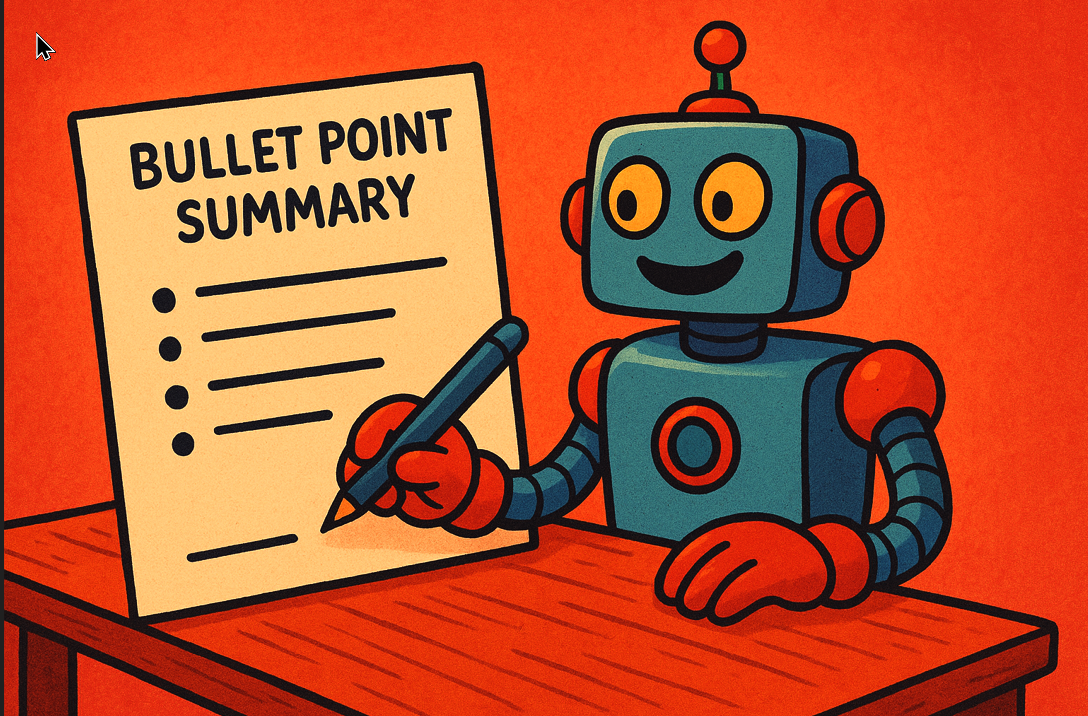The Benefits, Limitations and Risks of AI Summaries
One of the most powerful uses of AI is to generate summaries that augment understanding. The ability to summarize multiple documents of hundreds of pages is something impractical for a human to do quickly and accurately, making this a particularly valuable tool for time-constrained board directors.

The Game-Changing Benefits of AI Summarization
- Time efficiency – The major benefit is time saved. A summary allows directors to quickly grasp the key points of complex documents, enabling more efficient preparation for board meetings.
- Accessibility – Summaries make information more digestible for people with limited reading time and can help to overcome language barriers when combined with AI translation. Beyond reducing the volume of information, summaries can be adjusted to the user’s comprehension level and expertise.
- Knowledge Retention – Summaries make it easier to recall, share, and revisit key points during and after board meetings.
- Customizability – The ability to generate summaries tailored to specific needs is where AI’s summarization capabilities truly shine. BoardCloud’s built-in summarization tool encourages users to use prompts to optimize summaries for their needs. Knowing the right type of summary required and the right prompt leverages the knowledge and experience of board members. Some examples summary types that can be prompted for include:
- Executive summaries for high-level overviews.
- Technical briefs for specialized topics.
- Bullet-point lists for quick scanning.
- Risk-focused summaries that highlight compliance issues and mitigation strategies.
What to Watch Out For: The Limitations and Risks
While AI is powerful, it is not foolproof. A savvy user understands its limitations.
- Over-Simplification – An overly aggressive summary might omit critical details that should inform decisions.
- Hallucination Risk – In rare cases, AI might insert information not present in the text. The risk of hallucination is still low as the information is pulled from the specific text rather than general knowledge.
- Overconfidence – AI can, with certainty, present incorrect or incomplete information as if it were correct and complete.
- Privacy and Security Risks - If summaries are processed in the cloud, sensitive or confidential data might be exposed to third parties. Organizations should carefully evaluate data handling practices, consider on-premises solutions for highly sensitive materials, and establish clear vendor vetting processes.
Navigating the Moral Hazard
There is great danger that Directors, due to time pressures, come to rely too heavily on summaries generated by AI, and will fail in their fiduciary duty to exercise informed judgment having not engaged with all the information presented in their board packs. It is therefore recommended that one use AI summaries as supplementary tools to enhance one's understanding, not as a substitute for engaging with the original material.
Boards should establish clear guidelines on appropriate use of AI summaries, particularly for material decisions, regulatory compliance matters, and risk assessments where comprehensive understanding is essential.
A Combined Effort
Human summaries tend to reflect a more nuanced understanding of context and tone (depending on the human), result in more creative interpretation, and can provide subtle insights.
The best results come from AI summarization combined with human oversight—AI handles speed and consistency while humans provide judgment and interpretation. Humans can identify misunderstandings, catch errors, provide domain expertise, and have a deeper understanding of the relevance of the information being summarized. Think of AI as a powerful assistant.
